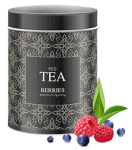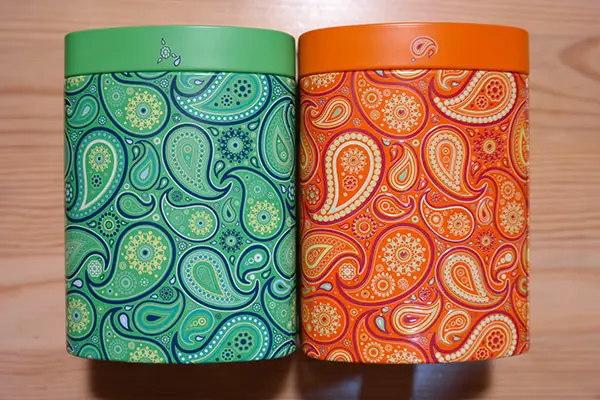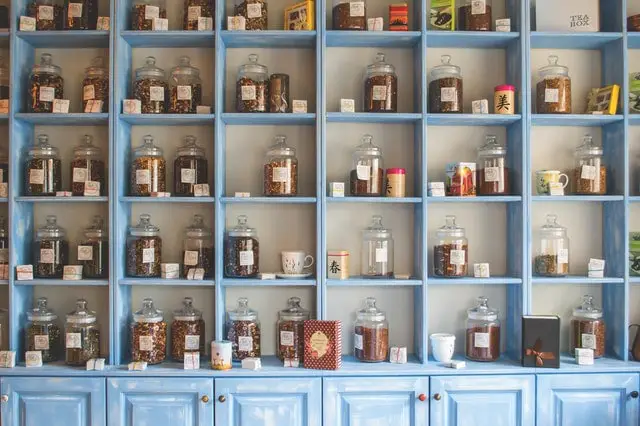
The top tea tins include the Teavac, SilverOnyx, Leoyoubei, Oggi, Henry Watson, and Zentealife containers.
As someone who invests in high quality, delicate tea leaves, I am obligated to find the best tea tins and containers for my prized leaves. After much research as well as trial and error, I can now share the top options with you.
In this post I outline the best brands and give you some insight into how to choose your own tins. Let’s get started!
Contents
These are the top options available to you:
What We Like:
What We Don’t Like:
What We Like:
What We Don’t Like:
What We Like:
What We Don’t Like:
What We Like:
What We Don’t Like:
What We Like:
What We Don’t Like:
What We Like:
What We Don’t Like:

When selecting tea storage containers, you need to look for the following features:
The materials of the canister shouldn’t interact with the tea in any way.
Thus, you not all materials will work equally as well.
Focus your attention on non-reactive metals, glass, ceramic, or porcelain.
While some people do enjoy using wooden containers, there is a catch.
Many kinds of wood have their own aromas and they may impart these to the tea.
It has been established that tea leaves need to be locked up tight. As such, an airtight seal is necessary.
Now, this doesn’t just mean selecting a canister with a really tight lid.
No, it is also a good idea to look for a container with a food-grade silicone seal.
You may also want to consider a canister or tin with a double lid.
Since tea shouldn’t be exposed to sunlight, it is important to select an opaque container.
This is especially important if you would like to use a glass jar – it can’t be transparent at all.
If there are any transparent components on your tin or container, then you will need to store it in the pantry cupboard.
As you will need to spoon the tea leaves out of the container, it is best to look for one with a wide opening.
This will make it far easier for you to make your daily cup of tea.
Related Articles
Here’s the Dish: All You Need to Know About the Best Tea Cups
You may be wondering why you need to take such care when storing tea.
Well, on average, tea leaves only have between 3 and 5 percent moisture content.
It is this dryness that allows you to store tea leaves for months on end.
At the same time, this low moisture content also makes the tea leaves hydroscopic – they will readily absorb moisture from anywhere that they can find it.
Due to this, the tea leaves must be kept well away from any kind of vapors or moisture.
Adding to this is that tea leaves can lose their flavor and aroma if exposed to the air for too long.
So, for best tasting tea, the leaves need to be stored appropriately.
It should also be noted that tea leaves can be influenced by other scents and aromas.
Thus, if the leaves aren’t enclosed properly, the tea will take on these flavors as well. Needless to say, this will alter the taste of the tea.
Tea leaves shouldn’t be exposed to sunlight, either.
The light and the heat can cause the leaves to degrade, reducing their flavor profile as well as their health benefits.
As such, the leaves need to be shielded from light as well.

Here are a few additional tips on storing your tea in loose leaf storage containers:
Always buy and store smaller amounts of tea. This gives you the opportunity to use and enjoy the leaves while they are still fresh.
Nevertheless, make sure to always fill the container close to the brim. This prevents air from getting trapped inside the canister and causing the leaves to degrade.
Last, but not least, make it a point to always tightly replace the lid on any canister that you are using.
If it appears that the lid or seal is compromised in any way, it is time for a new container.
As you can see, there are so many tea tins and containers to select from. It doesn’t matter what you are looking for, you are sure to be able to find one that is perfectly suited to your tastes.
If you are planning on buying your own tea tin or canister, make sure to follow the tips and tricks mentioned here.
Did you like this post? Then, head over to our Pinterest page. We have many more tea-related tool posts for you to go through.
